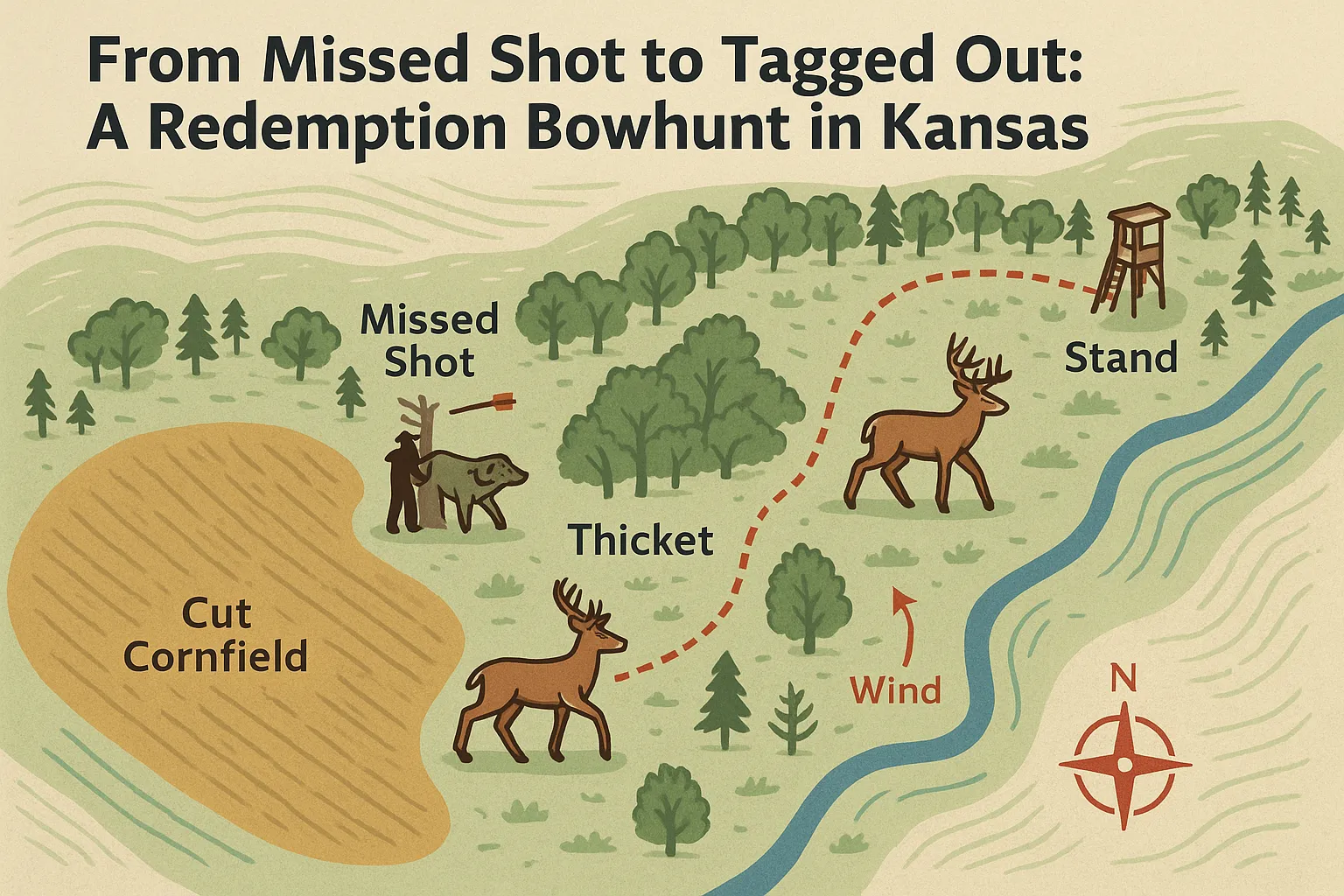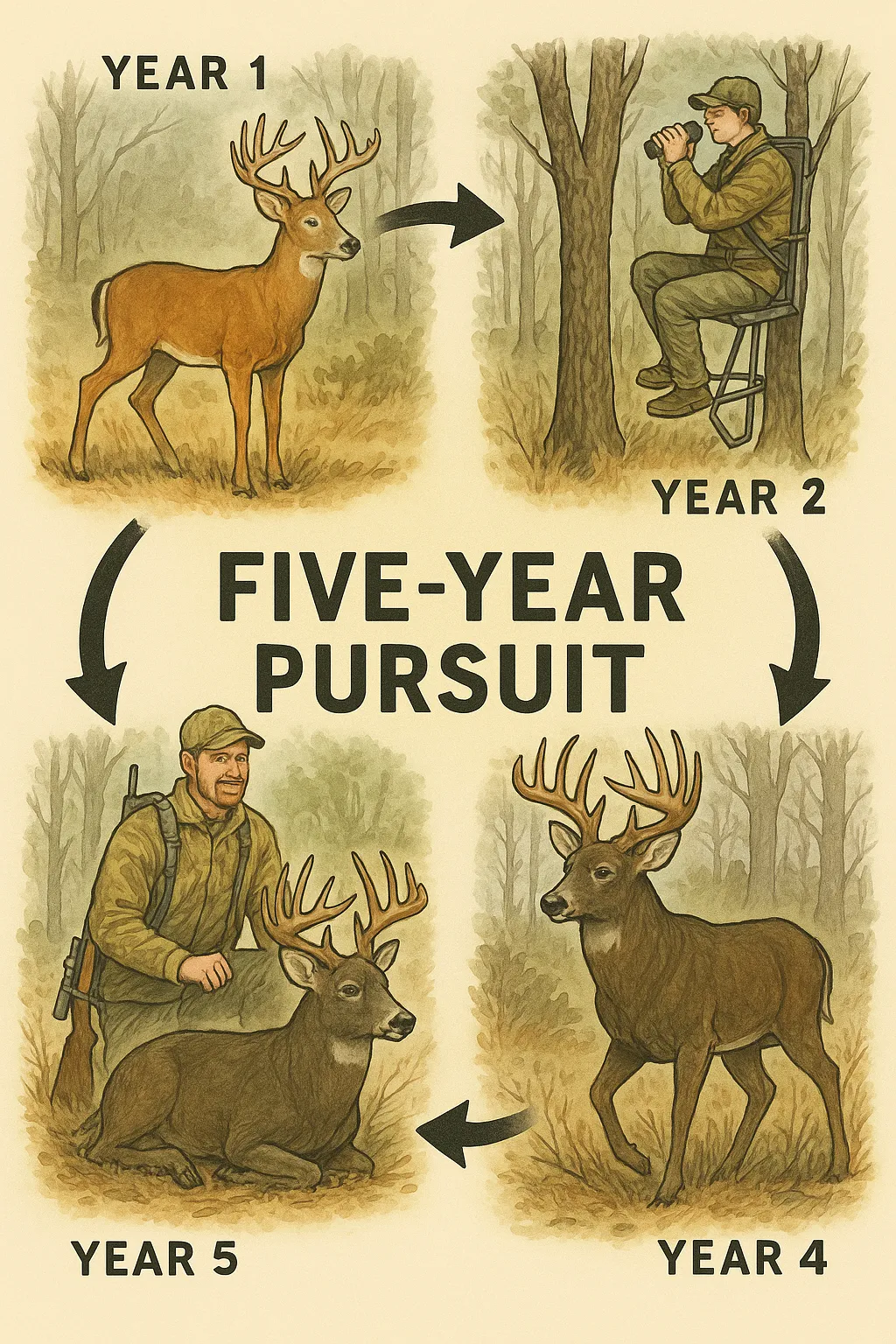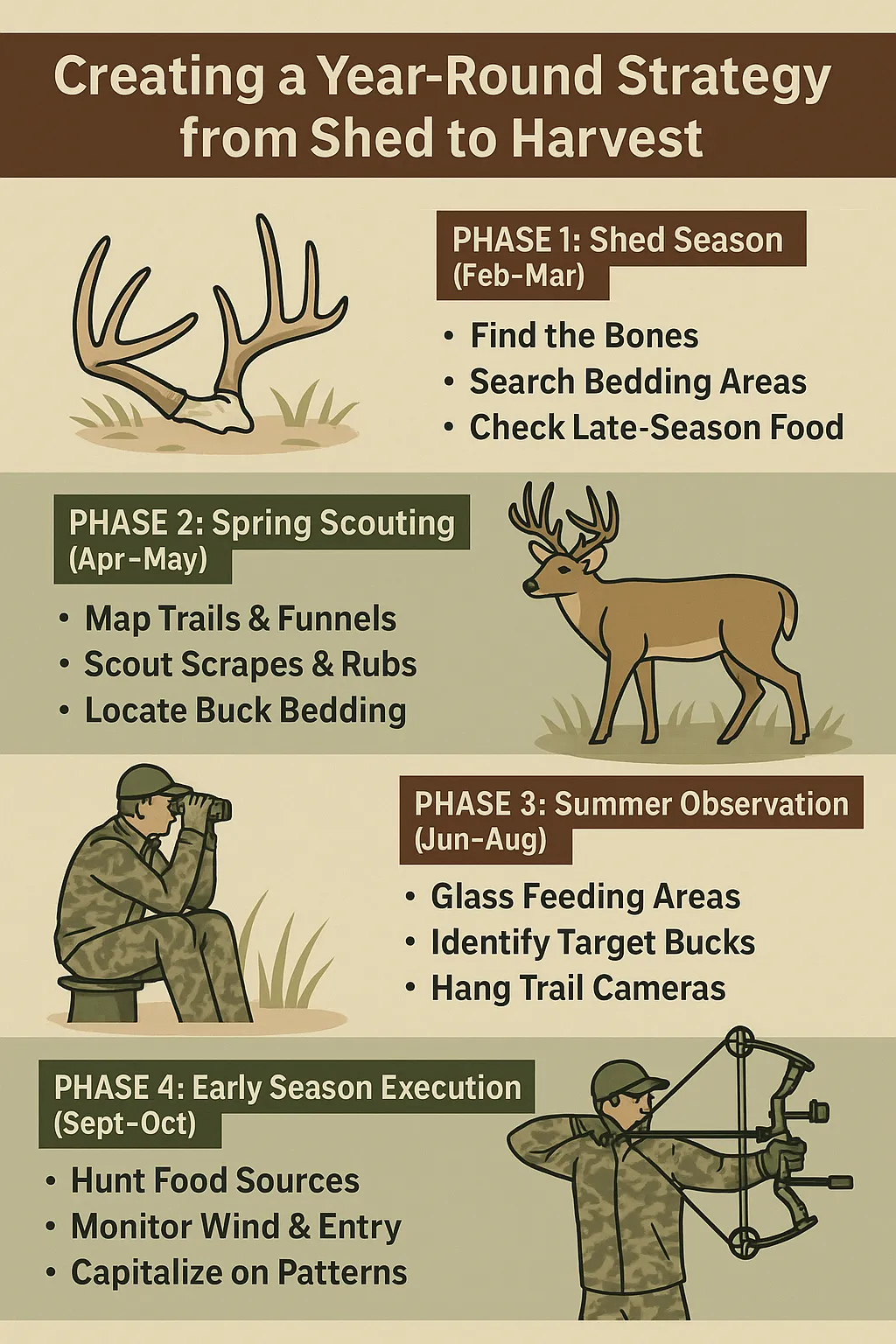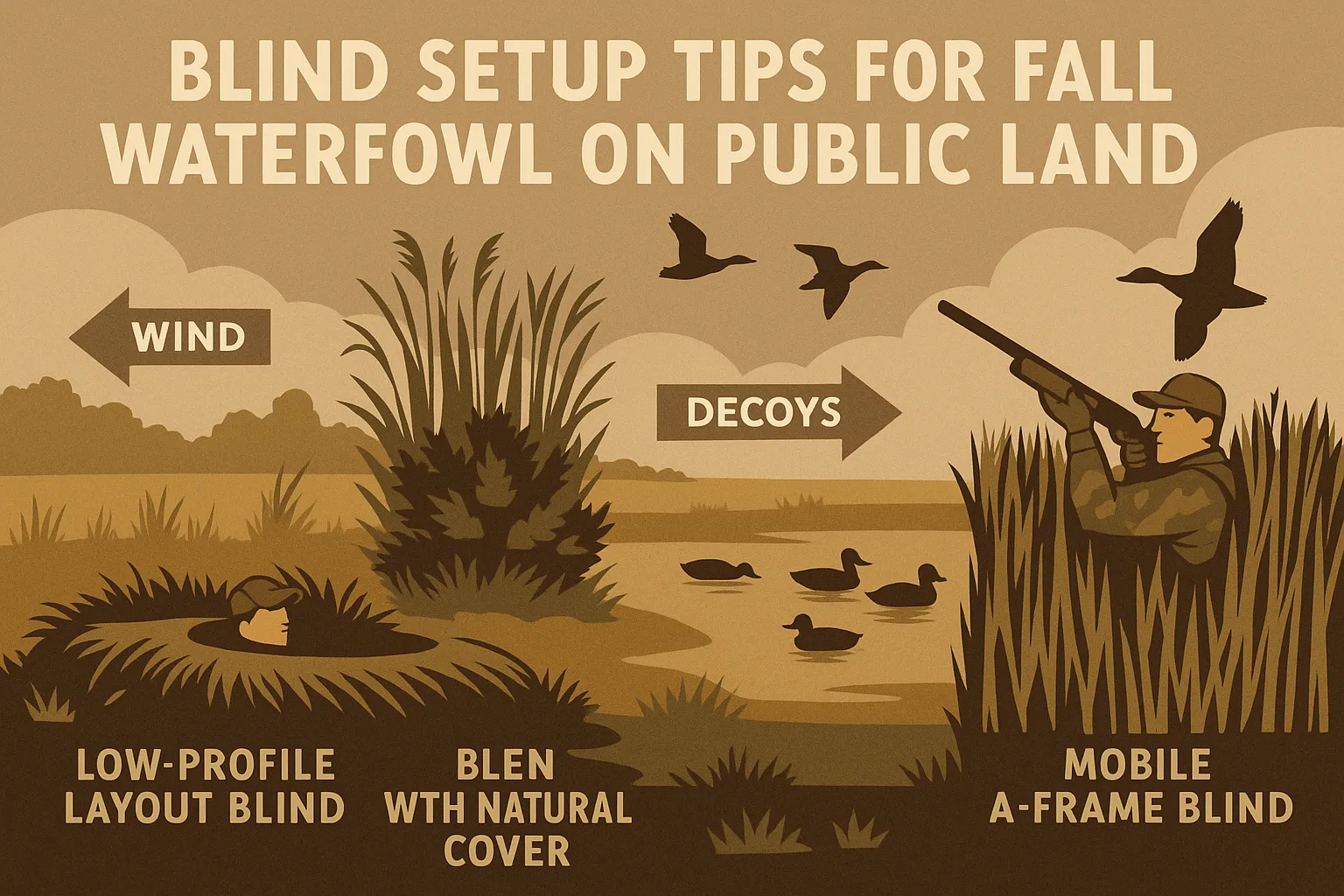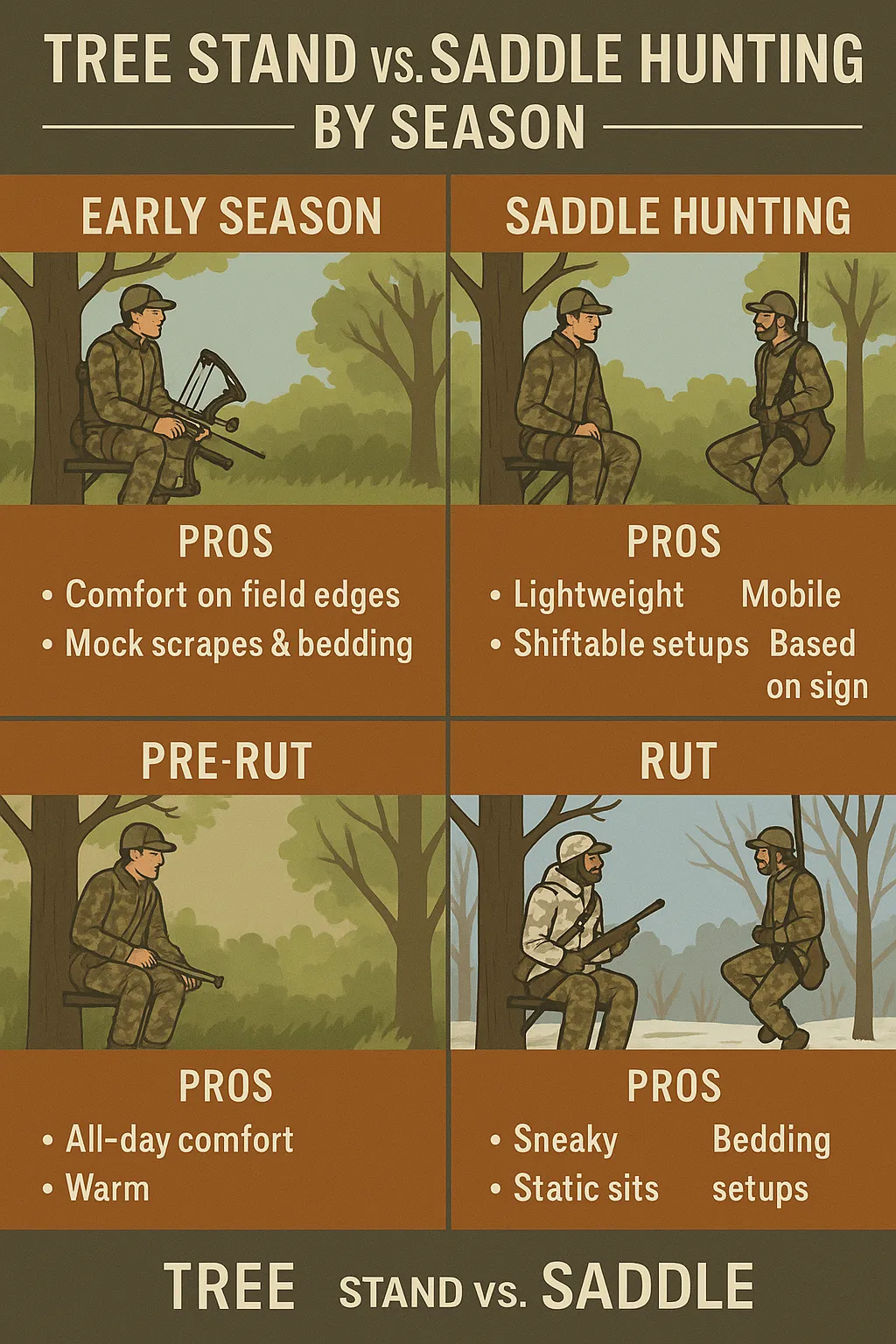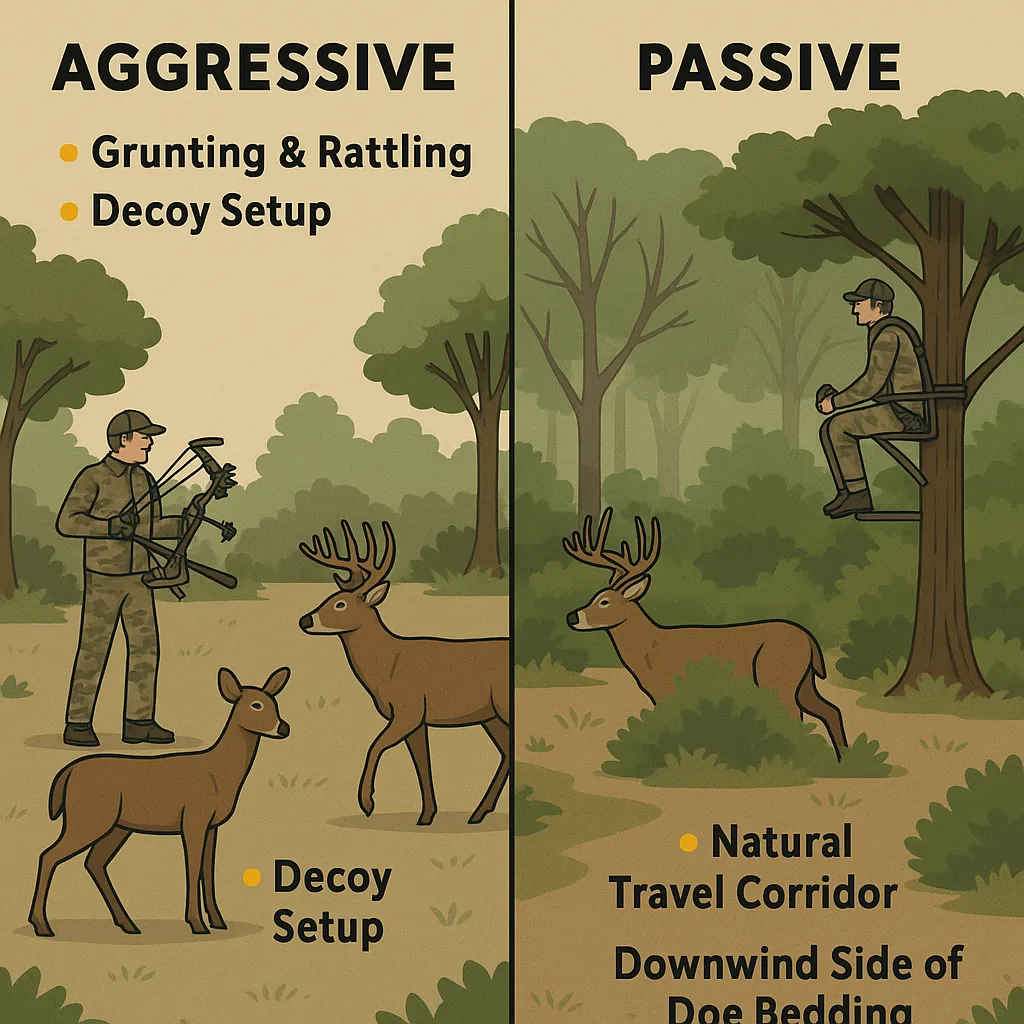
Aggressive vs. Passive Tactics in the Rut: Which Wins?
When bucks are chasing and chaos takes over the woods, your success hinges on one critical choice: Get aggressive or hang back? The rut turns deer behavior upside down, and hunters are often caught between hammering calls, mock scrapes, and rattling sequences—or just quietly waiting in the right place at the right time.
So, which works best in 2025’s evolving hunting pressure and rut patterns? Let’s break down aggressive vs. passive tactics in the rut, and when each one wins.
🔥 Aggressive Rut Tactics: Make the First Move
📌 What It Means:
-
Grunting, rattling, and calling with intent
-
Decoy setups for confrontation or curiosity
-
Ground stalking based on fresh sign
-
Moving stands mid-hunt based on hot intel
🧠 When to Go Aggressive:
| Condition | Why It Works |
|---|---|
| Bucks are cruising midday | They’re searching for does, not locked down |
| Cool temps + high pressure days | Deer are on their feet longer |
| Scrapes freshened overnight | Bucks are actively checking and marking territory |
| Remote terrain or low-pressure land | Deer are less call-shy and more curious |
🎯 Go-To Aggressive Tools:
-
Rattle bags or antlers
-
Can call + grunt tube combo
-
Buck or doe decoy
-
Climber or mobile saddle system
🎙️ “He came in on a string to a snort-wheeze and a soft grunt. If I hadn’t called, I never would’ve seen him.”
— Jake D., Illinois
✅ Aggressive Pros:
-
Pulls deer into range that would otherwise pass out of sight
-
Useful in open country or tight terrain where visual cues work
-
Works well when bucks are actively cruising or seeking
❌ Aggressive Cons:
-
Can spook subordinate bucks or call-shy deer
-
Loud tactics reveal your location to deer and other hunters
-
May not work in high-pressure public areas
🧊 Passive Rut Tactics: Let the Deer Come to You
📌 What It Means:
-
Hunting natural travel corridors or downwind of doe bedding
-
Avoiding calls or rattles—silent observation and interception
-
All-day sits in proven funnels and terrain traps
-
Relying on patience and deer predictability
🧠 When to Stay Passive:
| Condition | Why It Works |
|---|---|
| Bucks are locked down with does | Movement is limited—intercept or wait them out |
| Pressure is high or call fatigue | Deer have heard it all—go ghost and ambush |
| Known funnel between bedding/feed | Travel pattern remains consistent |
| Wind is marginal for calling setups | Less scent spread = lower alert risk |
🎯 Go-To Passive Setups:
-
Downwind side of doe bedding
-
Ridge saddles or necked-down creek crossings
-
Pinch points between cover and feed
-
Inside corners of timber
🎙️ “I saw three shooters cruise through the same saddle between 11 and 2. Never called. Never moved. Shot the fourth.”
— Mandy R., Missouri
✅ Passive Pros:
-
Less risk of blowing out deer
-
Works well during lockdown or late rut
-
Great for pressured public land or mobile setups
❌ Passive Cons:
-
Requires patience and long sits
-
May miss opportunities if buck isn’t in travel zone
-
Not effective in large, open terrain without travel pinch
🔄 Tactic Selector: Rut Phase Breakdown
| Rut Phase | Best Tactic | Why |
|---|---|---|
| Pre-Rut (Oct 20–31) | Aggressive | Bucks searching and claiming ground |
| Peak Rut (Nov 1–12) | Mix of Both | Some cruising, some lockdown behavior |
| Lockdown (Nov 13–18) | Passive | Bucks are tight on does—ambush is king |
| Post-Rut (Nov 19–30) | Passive > Aggressive | Tired bucks = cautious movement, lone cruising |
🎙️ “I hunt passive during lockdown, then switch back to rattling and bump setups for post-rut when bucks are lonely and searching again.”
— Eric V., Ohio
🧠 Pro Tips for Blending Both Tactics
✔️ Start Passive, Finish Aggressive – If nothing’s moving by 10AM, try light grunts or rattling
✔️ Use Terrain to Mask Movement – Call from behind ridges or brush to hide your setup
✔️ Stay Mobile – Have at least 2–3 fallback stand locations based on movement
✔️ Test the Call – One soft grunt may be all it takes—don’t overplay
✔️ Know Your Deer – If bucks in your area respond well to rattling, lean in. If not, go silent
🎙️ “One soft grunt brought in a 145” buck. The same call an hour later spooked a forky. Context is everything.”
— Cody L., Wisconsin
📦 Tactical Gear for Rut Success
| Item | Best For |
|---|---|
| Grunt Tube + Snort-Wheeze | Aggressive engagement |
| Climber Stand or Saddle | Relocation during peak rut |
| Rattle Bag or Antlers | Simulate fights and buck presence |
| Thermal Layer Kit | Surviving all-day passive sits |
| Wind-checker + Scent Bag | Keep scent and calling aligned |
Rut Resources Worth Checking
-
Apps: Spartan Forge (rut forecast), HuntStand Pro
-
Videos: Whitetail Edge – Lockdown Strategy, The Hunting Public – Rattling vs. Waiting
-
Communities: SaddleHunter Forum, Mid-Rut Madness Facebook Group
💡 Pro Tip: Your first decision each morning during the rut isn’t where to hunt—it’s how to hunt.
🌟 Final Shot: Play the Phase, Not the Trend
The rut isn’t one strategy—it’s five mini-seasons inside one. There are days when silence kills, and days when noise brings them on a string. The key to success isn’t picking aggressive or passive—it’s knowing when each wins.
“The best rut tactic? Adaptation. If your playbook is flexible, your tag will get punched.”
Leave A Comment
Related Posts
Blind Setup Tips for Fall Waterfowl on Public Land Hunting […]
Tree Stand vs. Saddle Hunting by Season: Pros & Cons […]
Trail Cam Strategy by Season: When & Where to Set […]

